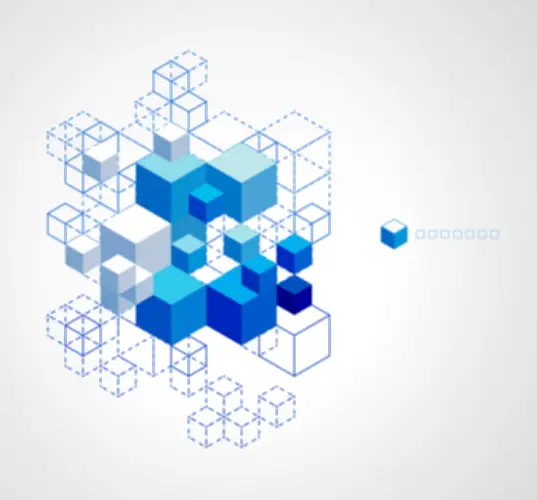When Android Enterprise is deployed on Samsung gadgets, it can have enhanced platform and hardware degree safety. Orchestration tools like Kubernetes or Docker Swarm leverage the photographs and configuration files to deploy containers and handle further tasks similar to load balancing, service discovery, and rolling updates. With orchestration, corporations can deploy applications across clusters of hosts, making certain excessive availability and scalability. Containers share the same operating system kernel and isolate the appliance processes from the remainder of the system so the whole thing could be moved, opened, and used across improvement, testing, and production configurations.

Networking And Safety In Cloud Containers
What makes a container sooner than a VM is that by being isolated area environments executed in a single kernel, take fewer resources. Containers can run in seconds, whereas VMs need more time to start every one’s operating system. Containerization has optimized the virtualization as compared with digital machines by lowering the variety of resources and execution time. Also, firms get monetary savings as a result of they don’t need several versions of working techniques with their respective licenses.
Kubernetes consists of features similar to self-healing, horizontal scaling, and declarative configuration, all of which make purposes run smoothly and effectively. Containerized apps utilizing microservices turn out to be so flexible that you could host certain parts on bare metal and deploy others to digital cloud environments. You can deploy to hybrid cloud environments that utilize a combination of naked metallic, on premise, and numerous cloud suppliers. With the portability of containers, you can kotlin application development choose the best way of internet hosting the different services in your app. Containers function on an abstracted layer above the underlying host operating system.
Hybrid Cloud And Containerization
Kubernetes allows to automatically control the workload of the containers, their interplay, and implementation. As we mentioned earlier, in contrast to virtual machines, containers do not need to have a unique working system. This function makes them sooner and lighter since they devour fewer sources from a server or the cloud. There are two major features of the software improvement life cycle that Docker and containers are trying to deal with – First one one is on the development side and the second one on the deployment aspect.
This division makes it a lot simpler for developers to implement adjustments and deploy new code. You can change isolated areas of the appliance describe the benefits of containerisation with out affecting the entire. The abstraction provided by containerization ensures that your container works the identical way irrespective of where you deploy it. That means you possibly can take your app to the cloud, run it on in a VM, or go immediately to bare steel. As lengthy as the host operating system helps your containerization instruments, similar to Docker, you are able to deploy with minimal trouble.
- It provides builders self-service environments for constructing, and full-stack automated operations on any infrastructure.
- As A Result Of purposes don’t want the host operating system, they’re executed quicker.
- The key’s to implement BYOD in a way that simply ensures safety without compromising worker privacy.
- By constructing an software as soon as, it becomes deployable on various operating methods.
This feature not solely drives greater server efficiencies but in addition reduces server and licensing costs whereas speeding up begin instances, as there isn’t a operating system as well. Containers enhance security by isolating applications from one another and the underlying infrastructure, decreasing the attack surface. Additionally, the consistency throughout environments facilitates comprehensive security testing and patch administration.
Its widespread adoption has made it a elementary tool within the DevOps ecosystem. Container-based functions can work across highly-distributed cloud architectures. Application runtimes middleware provides tools to support a unified setting for improvement, delivery, integration, and automation.
Thus, admins can stop private functions from accessing company information and users can be assured that the organization won’t access the private information that they store on the gadget outside the container. Not Like virtual machines, containerized functions launch swiftly as they don’t require the booting of a whole working system. Consequently, developers can effortlessly combine a number of containers for varied applications on a single machine. These containers share computing assets from a typical working system, making certain that the operation of 1 container doesn’t impede others within the cluster. Containerization allows developers to create and deploy purposes quicker and more securely. With traditional methods, builders write code in a specific computing surroundings, which, when transferred to a model new location, usually results in bugs and errors.
Both are software program development practices that primarily rework purposes into collections of smaller providers or elements which may be transportable, scalable, efficient and simpler to handle. Virtualization makes use of a hypervisor, a software program layer positioned on a bodily pc or server that allows the physical computer to separate its operating system and applications from its hardware. Virtualization expertise permits a number of working techniques and software functions to run simultaneously and share a single bodily computer or host machine’s resources (for example, CPU, storage and memory).

A physical server running three digital machines would have a hypervisor — a “host” working system — and three separate “guest” working techniques operating on prime of it. The improvement and deployment of cloud-native containerized functions require an efficient and streamlined workflow. This part elaborates on the way to construction your CI/CD pipeline, arrange your growth environment, and apply testing strategies to ensure easy deployment and reliability in manufacturing. Many individuals consider that containers are less safe than virtual machines as a result of if there’s a vulnerability in the container host kernel, it might provide a means into the containers that are sharing it.
Containerized functions operate inside isolated computing environments, allowing developers to troubleshoot and modify utility code without disrupting the working system, hardware, or other application providers. This facilitates expedited software launch cycles and enables swift updates through the container model. One nice benefit of containers over other type of deployment is that it is portable, Irrespective of your operating system, your pc’s specs or the rest, containers can run on any host. We would just need an appropriate container runtime, making it simpler to deploy applications across completely different environments. Deployment is upon getting build an application you’ll need to place it in some server so as to make it available to the world. You can see this again comes with lots of steps and a lot of complexity and far more durable to ensure that it is going to be proper every single time.

Aside from Android Enterprise, Samsung devices have a built-in containerization platform known as KNOX. Samsung KNOX is a containerized method that builds Samsung’s defense-grade cell safety platform into Knox-supported units released by Samsung. Apps in the KNOX workspace is protected by in depth https://www.globalcloudteam.com/ DAT (Data at Rest) protections and is secured with AES-256 degree encryption. KNOX requires an MDM platform for the activation and administration of its container. Nonetheless, Samsung KNOX units could be enrolled in Android Enterprise if they are working OS versions 6.zero and above.



